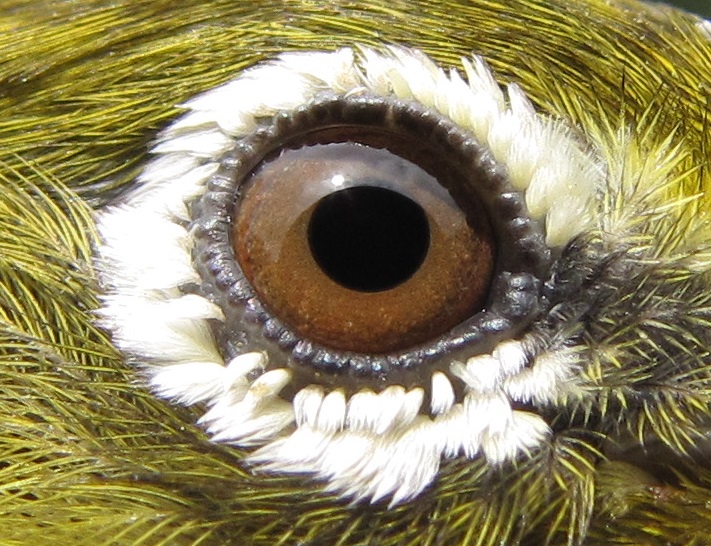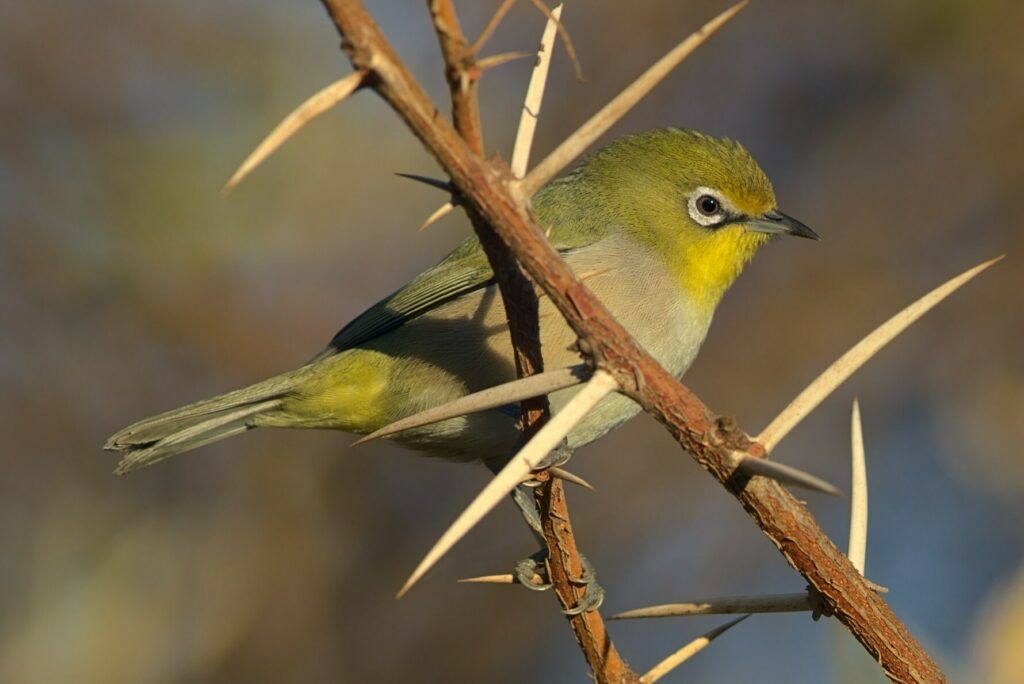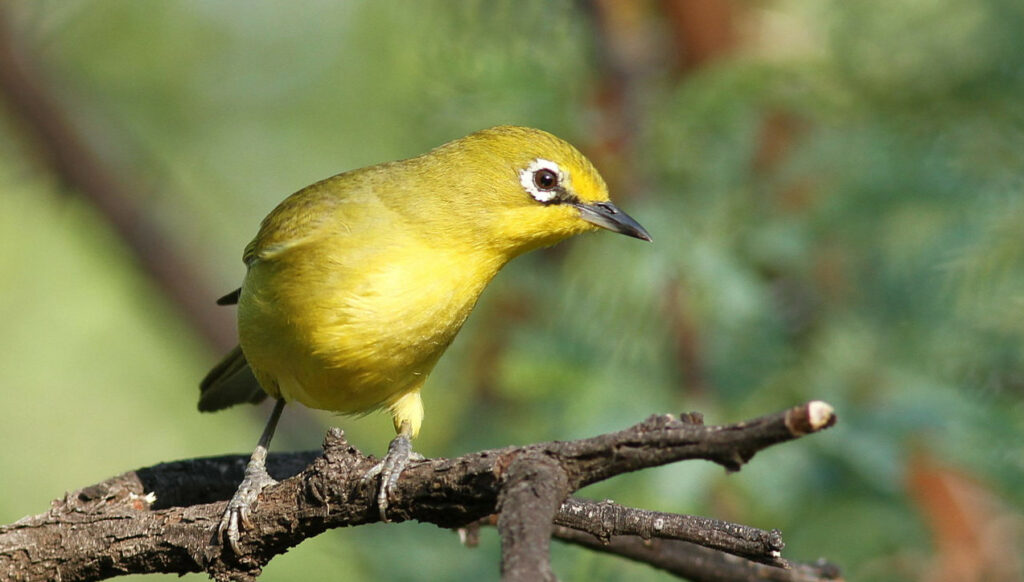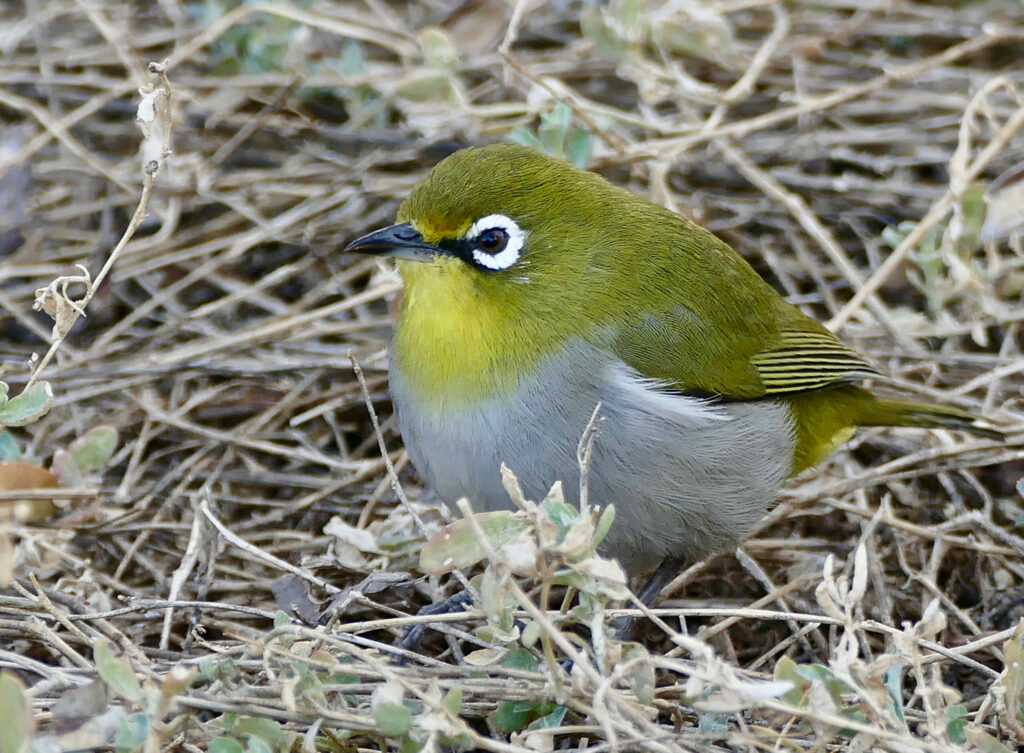When I first saw the Orange River White-eye a couple of months ago, it got me thinking about the group, and having seen white-eyes in different parts of the world, I wondered about their evolution. There is something weird about a group with so many different but similar species, and within which strangely different looking forms are not separate species. Being a biologist, this is something that one thinks about when you see a lot of species with seemingly small variations in colour and song. I set out to learn more about the white-eye family, the Zosteropidae and their speciation.
Speciation is the evolutionary process by which populations evolve, or change over time, to become distinct species. So when we are talking about speciation in white-eyes, we are talking about the formation of species within this family.
The Zosteropidae is native to tropical, subtropical and temperate Sub-Saharan Africa, southern and eastern Asia, and Oceanea. White-eyes get their name from the white feathers that frame their eyes, giving them a very distinct appearance, with the name of the family also derived from this feature in ancient Greek, where it means “girdle eye”. All white-eye species are sociable, forming small to large flocks except during the breeding season. White-eyes are mainly insectivorous, but they also will eat nectar and fruits of various kinds.

While Zosterops – the genus that includes our three southern African species – is the largest genus with around 99 species, there are 12 other genera in the family, each having only a few species.

Seems I was not the first to wonder about speciation in Zosterops. For quite a few years, white-eyes have been known as the “Great Speciators” because of their apparent ability to give rise rapidly to new species while other birds occupying a similar range show little or no diversification. The term “Great Speciators” was coined by the great evolutionary biologists Ernst Mayr and Jared Diamond after they encountered white-eyes in the Solomon Islands where each island had a distinct species of white-eye. Despite the distinctiveness of white-eye species, other birds did not vary much between islands. Mayr’s visit to the Solomons was 89 years ago and we are only beginning to understand white-eye speciation in the last decade or so!
In 2009, American evolutionary biologist and ecologist Chris Filardi collaborated with Rob Moyle (University of Kansas), Catherine Smith (Missoula, Montana), and Jared Diamond (UCLA) to study both nuclear and mitochondrial DNA. They first found that the more than 100 species in the Zosteropidae evolved very recently, arising as a group between 4.46 and 5.57 million years ago, and further that Zosterops itself rapidly diversified into a large number of species within the last 2 million years. They were able to show that Zosterops shows the fastest known rate of speciation among birds: between 2.24 and 3.16 species per million years. Only a few vertebrate groups have ever exceeded this rate of diversification, one being well-known cichlid fishes found in lakes of the African Rift Valley.

Filardi suggested that high rates of diversification may have as much to do with a species’ ‘personality’ as they have to do with more classical geographic or geological drivers of speciation. Interestingly, white-eyes do show peculiarities of personality that many birders recognise and that can be used to separate species while birding. Incidentally this is the same Chris Filardi who was subject to severe bullying on the Internet because he found a male moustached kingfisher on Guadalcanal, and collected it for science.
Just last year, in 2019, Sarah Cowles and Albert Uy published a paper in the journal Evolution, based on research that they did on the small island of Kolombangara, in the New Georgia Islands group of the Solomon Islands. They showed that two closely related species of white‐eyes, Zosterops kulambangrae and Zosterops murphyi, are distributed along a gradient of elevation and come into secondary contact at mid‐elevations. Using genotyping‐by‐sequencing data and a mitochondrial marker, they found no evidence of past hybridization events and strong persistence of species boundaries despite mid-altitude overlap. They suggested that pre-mating isolation based on divergence in plumage and song may help keep the species separate long enough for them to evolve reproductive isolation.
We should not think that this is the only mechanism for co-ocurrence of different species of white-eyes. In 2017, a group of authors showed that in Sri Lanka, non-sister white-eyes are a result of independent colonisations from different ancestral lineages and the sustained divergence following colonisation. They did not arise through island speciation or multiple colonisation from the same continental ancestral population.
Also in 2017, David Pearson and Donald Turner published, in the journal Scopus, a taxonomic review of the genus Zosterops in East Africa, with a revised list of species occurring in Kenya, Uganda and Tanzania. It is clear from their work that the African species of Zosterops are just as ‘great speciators’ as any other, which of course creates some challenges to classical taxonomy.

In southern Africa, we have three species of Zosterops, the Cape white-eye (Zosterops virens), the Orange River white-eye (Z. pallidus), and the southern yellow white-eye (Z, anderssoni). Based on genetic evidence, the southern yellow white-eye was split from Z. senegalensis, formerly known as the African yellow white-eye, in 2013. The latter is now known as the northern yellow white-eye.
Graeme Oatley completed his PhD in 2011 in the Percy FitzPatrick Institute of African Ornithology at UCT on the taxonomy, phylogeny and eco-biogeography of southern African white-eyes. He used plumage, morphometric, and vocal characters as well as molecular (mitochondrial and nuclear) DNA sequences. The situation with African white-eyes was not unlike that of other white-eyes in other regions.

The Orange River white-eye had a difference song and contact calls compared to the other species that made up the study. That species was shown to be a basal clade with respect to what is now known as the southern yellow white-eye and the Cape white-eye, with divergence having taken place during the Pleistocene (relatively recently in evolutionary terms). Despite this, the Cape and Orange River white-eye interbreed, which was thought to be due to to recent expansion of Cape white-eye into the range of the Orange River species.
Oatley’s study recognised two subspecies of Cape white-eye: Zosterops virens capensis (with a grey belly, occurring in south-western South Africa, and the Drakensberg mountain areas) and Zosterops virens virens (with a more uniform shade, and a yellow belly, occurring in eastern and south-eastern Botswana, eastern and northern South Africa, Swaziland, and adjacent south-western Mozambique). While the subspecies are morphologically distinct (underpart plumage colouration), Oatley concluded that similarities in vocalizations and DNA suggests that these taxa have yet to reach independent evolutionary trajectory that warrants species status. Given the speedy speciation in white-eyes, perhaps they are rushing in that direction, but have not quite gotten there yet. But then, what is a species anyway!
Cape white-eye
Orange River white-eye
In a subsequent paper in the journal Molecular Phylogenetics and Evolution, Oatley and his colleagues noted: “the recent, rapid radiation of Zosteropidae, coupled with their high levels of colonizing ability and phenotypic diversity, makes species delimitation within this family problematic”. This is perhaps an understatement for a group that is rushing madly off in all directions at once.